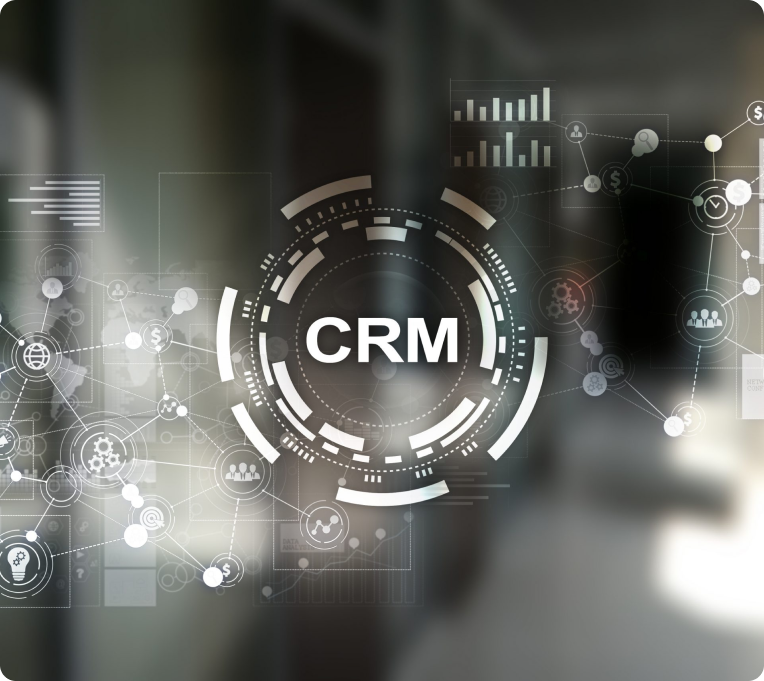CRM FUNDAMENTALS
A CRM, at its core, has always been about data consolidation revolving around customer information. All this data is poured into what’s called a CRM database which serves as a store for the platform. This allows organizations and businesses to run their processes more effectively and efficiently.
However, we’re in the 21st century now and CRM software has evolved. Today, a CRM comes with a range of different features that exponentially increase its functionalities. Features such as marketing automation and workflow automation are now essential in CRMs. They serve to increase productivity and performance. Let’s take a look at some of the mainstay features that are included in most CRM software products:
Marketing Automation
There are a number of tasks in the customer lifecycle that can be categorized as run-of-the-mill. These are repetitive and dull, and dedicating a resource to these is redundant. This is why a key appeal of CRM software is that it allows these tasks to be automated. Let’s say you have a lead in the first stage of the pipeline. A CRM will automatically send him the necessary emails, follow-ups, and marketing materials to turn him into a customer. Marketing automation has evolved to a level where a CRM can automatically direct a lead through most of the pipeline processes and thereby increase the overall productivity of the organization.

Sales force Automation
Salesforce automation allows you to track your customer interactions and automate processes in the sales cycle that contribute to an increase in leads and new customers.
“Marketing automation has completely transformed how businesses interact with their leads and customers. The ability to automate repetitive tasks frees up valuable time and allows teams to focus on strategy. At Wave Connect, we’ve implemented CRM solutions that take care of every step in the customer lifecycle. From lead generation to nurturing, a well-structured CRM system ensures no opportunity is missed and productivity is at an all-time high. One of the key innovations we’ve seen is the integration of digital business cards, where contact details are automatically captured and synced with the CRM, creating a seamless, data-driven experience.” — George El-Hage, CEO of Wave Connect
Customer Support Automation
Many call centers use a CRM to automate certain tedious tasks. These usually include pre-recorded audios that can assist customers with various issues and problems. Similarly, various CRM integrations can be used to manage customer requests to increase response time and simplify the management process.
Geolocation technology, or location-based services
Amplify your contact management and networking capabilities with the help of CRM systems and geolocation technology. Create marketing campaigns and use geo-technology for targeted marketing and identifying potential sales prospects.
Social CRM
Make an established presence on social media platforms and identify potential communication, marketing, and networking avenues. Social CRM presents a direct connection with your potential and existing customers. A business can track conversations about itself to identify issues and consequently, it becomes significantly easier for customer feedback to reach the company.

Workflow automation
A CRM system allows businesses to focus on high priority tasks by taking care of redundant, repetitive, and mundane processes and workloads.
Lead management
A CRM can track a lead through the sales cycle, and the Sales team can aptly input and analyze all corresponding data from within the CRM to make the process much easier.
Human resource management
CRMs can track and record employee information such as contact information, performance, incentives, and much more. With a CRM in place, multinational corporations and mid-level businesses alike can make their HR processes effective and manage them seamlessly.
Analytics
Dig deeper into how your processes impact customer behavior and grow customer satisfaction rates. With Analytics in CRM, you can analyze data and create targeted marketing campaigns based on the customer insights you discern.
AI in CRM
Artificial Inteligence Technology in CRM helps take the workload off of employees. Machine learning features and data analytics help automate mundane tasks and identify customer patterns that are otherwise difficult to analyze to make things much easier for employees.

HISTORY OF CRM
Customer interaction and retention has always been at the very core of any successful business. The most primitive CRM was when a salesperson filled out customer details on a card to keep records. The advent of the digital age merely brought this one-dimensional concept to digital mediums and scaled it for large multinational corporations. Since its inception in the early 1970’s, CRMs have evolved through multiple milestones into a huge multi-billion dollar industry that provides services ranging from customer retention and third-party integrations all the way to cloud-based infrastructures. From simply providing a medium that could consolidate customer data, CRM software has evolved to a point where CRMs are now capable of managing comprehensive business relationships. This has reached a point where it’s entirely plausible to say that a CRM can transform organizations. SugarCRM exists as the biggest open-source CRM platform, and Salesforce services exists as the largest cloud-based CRM platform. These two collectively take up the biggest chunk of the global CRM market.
TYPES OF CRM TECHNOLOGY
The primary platforms for CRM are Salesforce, Sugar, SAP, and Microsoft. There are a host of other providers that primarily target small to medium-sized businesses. These four, however, are courted by a majority of the top multinational corporations. Think of these four as the big four Hollywood studios, they got all the big bucks! Each of these has a particular USP and offer the following in terms of CRM technology:
On-Premise CRM
On-Premise CRM is used to administer, control, maintain and safeguard the database of the company in question. Organizations opting for an on-premise CRM would purchase the CRM upfront for a particular cost instead of opting for a yearly subscription model such as that of the Salesforce Cloud Platform. The on-premise CRM is implemented onto the company’s servers and henceforth the user is responsible for all maintenance costs and upgrades. In comparison to a cloud-based CRM, this is a prolonged process and takes time to fully integrate. However, on-premise CRM is an excellent option for companies that need a complex CRM in place.

TYPES OF CRM
There are two particular types of CRM software, open-source and proprietary.
Open Source CRM
Open source allows the client to directly access and customize the source code. For open-source CRM software, there are multiple established communities that consistently contribute to the software, thereby allowing more room for development, features, and customization. The burden of managing and updating the code lies with the community of developers and thus the CRM vendor in question has a plethora of resources to fill in the gaps left behind. An open-source CRM needs a dedicated developer community to function at its best. Perhaps the biggest benefit of an open-source CRM is its ability to integrate with a multitude of different CRM platforms, third-party apps, and tools.
Proprietary CRM
When it comes to proprietary CRM, the vendor holds all the cards. If an organization buys a proprietary CRM from a vendor, they have to rely on the vendor for all future updates, customizations and modifications. Proprietary CRM platforms also come with a multitude of customizations and modifications since vendors often modify CRMs for different industries, these are called CRM Industry Solutions that have customized modules, dashlets and reports. Another drawback of proprietary CRM is that vendors might withhold updates and release them collectively in a new version, forcing consumers to pay a steep price for them. However, when it comes to CRM support, proprietary CRM overshadows open-source CRM. This is primarily due to the fact that the CRM vendor itself takes full responsibility for all support tasks and needs and thus, inadvertently ensures that all business requirements are met effectively and timely. Proprietary CRM, however, puts certain restraints when it comes to integration with third-party apps.
Now that you have a comprehensive view of what a CRM is, does, and how it works, read on as we dive deep into the world of SugarCRM, beginning with where it all started.

